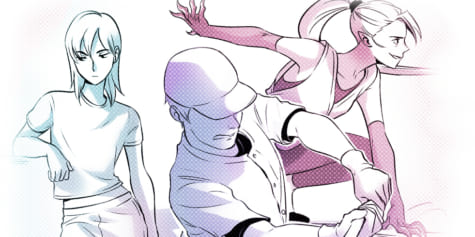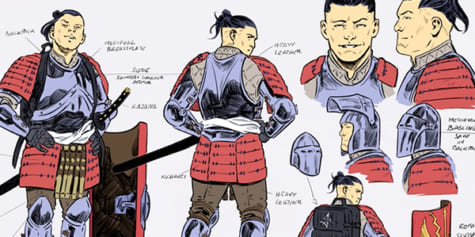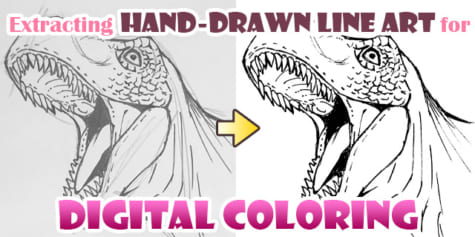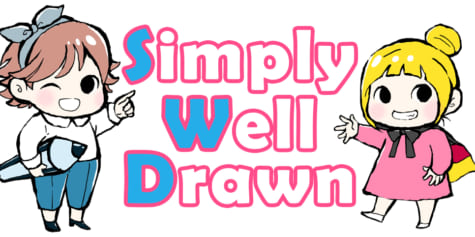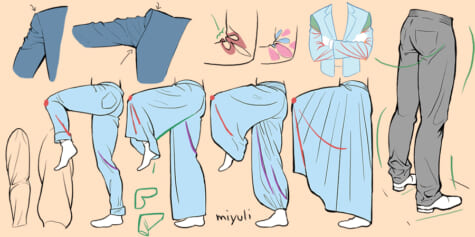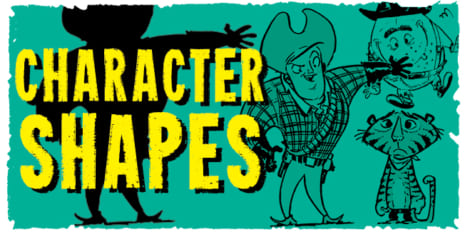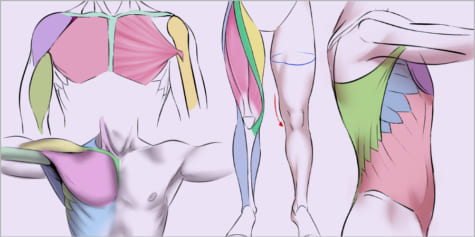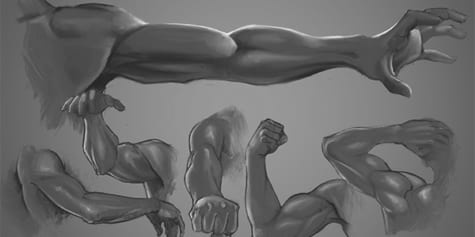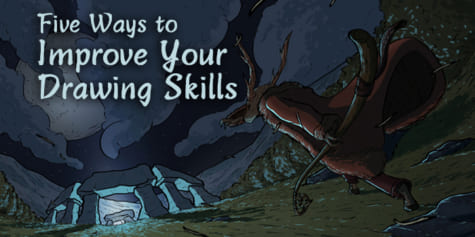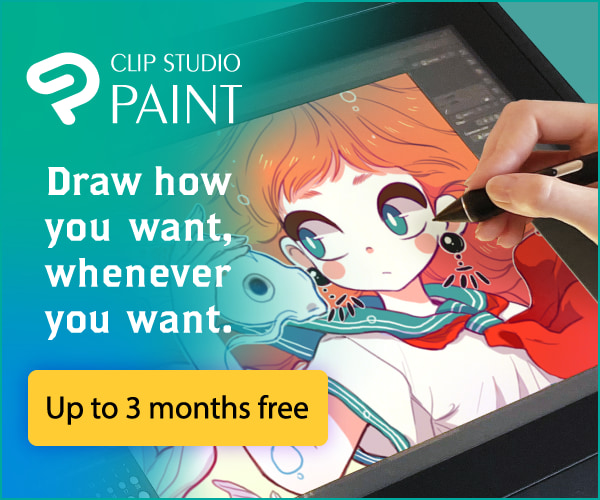How to Draw Croquis Sketches
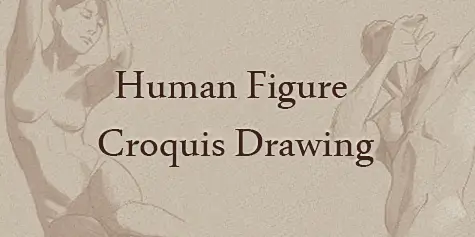
You may have heard that croquis drawing is a good way to practice rough sketching an illustration, but it is more than that. So what is it? In this tutorial, I will go over what croquis drawing is and how it can improve your drawing skills and your ability to draw what you see, even if you're a beginner.
The drawing practice technique called croquis will help you draw all kinds of things including comics and animation. Croquis drawing helps to make the body’s balance, joints, and limbs all look more natural. It also improves your drawing observation skills.
So before you start drawing your next illustration, start with some basic warm-up croquis sketches!
What is croquis drawing?
Croquis drawing is briefly drawing something in a short period of time. In fashion design, croquis are used as a template for sketching clothing. The drawing method consists of reducing the complicated details of the human body into the basic elements in order to quickly capture the essential elements (proportion, balance, mood) of the pose. Croquis drawing is great for beginners, as no special equipment is required, so you can practice it even if you only have a sketchbook and a pencil. You can even sketch croquis digitally on a tablet. Making croquis drawing a common practice will also improve your drawing skills because you gradually recognize the most important elements of the figure that you see.
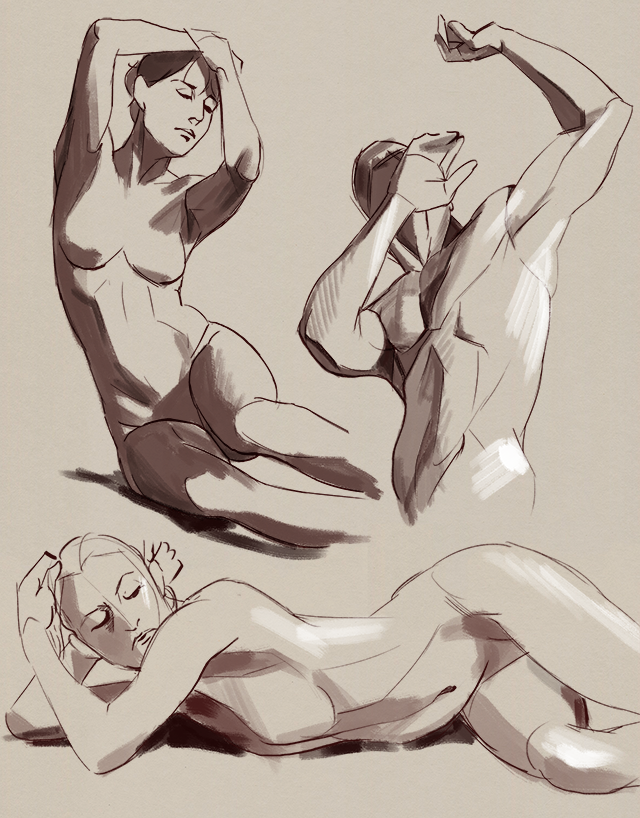
You can draw from a photo when croquis drawing, but I recommend drawing actual subjects whenever possible. Specialized poses aren’t necessary; natural poses found in everyday life are very good to study from, so why not use your family or friends as human figure models? You can also practice drawing your pets. There’s a lot to learn from animals with croquis sketches. However, if live sketches aren’t an option for you, you can also use different objects around your room as drawing subjects. For example, try drawing one of your favorite figurines or action figures from various angles.
Art materials used for croquis drawing
Paper
You can use single sheets of drawing paper, but I recommend using a sketchbook. This allows you to keep your drawings together undamaged. Over time, you can look back on your past drawings to check your progress and improvement.
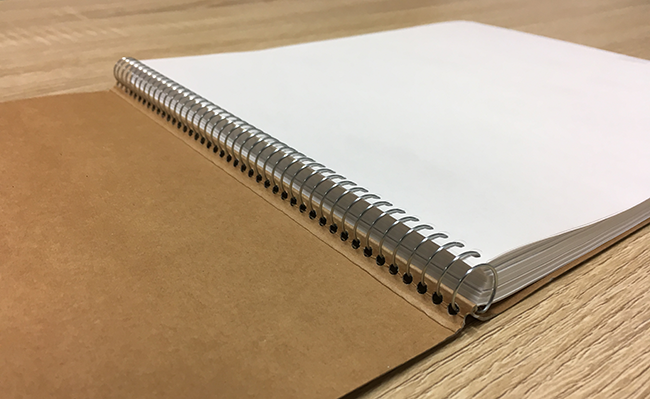
Pencils
For croquis drawing, it is better to use a soft lead pencil, at around 4B–6B hardness. You can draw with a normal mechanical pencil, but the lead is fragile, and the tip may end up damaging the paper. To avoid this, I recommend using 2mm sized lead.
Please note, although you may use a pencil to draw, you shouldn’t use an eraser to make corrections. Focus on getting the basic pose and figure down when drawing croquis.
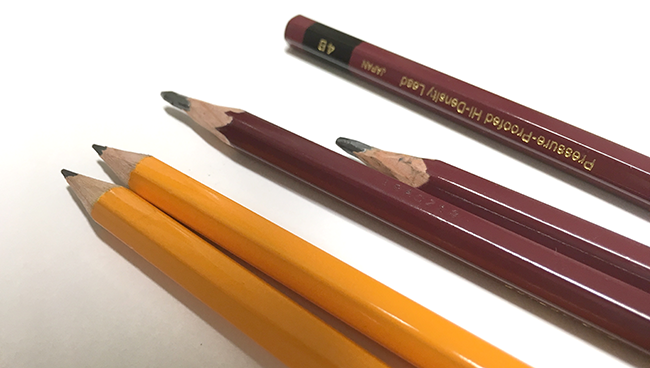
Other Mediums
Of course, you can use tools other than pencils! Some people prefer drawing with a ballpoint, felt-tip, or fountain pen. Different pens produce different lines. For example, lines from a fountain pen vary according to pen pressure.
Another option is a brush. Many people like the feeling when drawing with brushes, as they can produce delicate lines. In addition to traditional brushes, you can also use brush pens or watercolor brushes. However, sketchbook paper is generally not made for this kind of wet medium, so the ink may bleed through. Make sure you choose an appropriate paper type for different types of media.
Digital croquis drawing
You can also create croquis sketches digitally using drawing software on your computer or smartphone apps on your phone, tablet or iPad. If your device has touchscreen capabilities, some apps allow you to draw with your fingers. Of course, drawing on your smartphone screen isn’t ideal, because a larger canvas is better for capturing the entire shape of a figure. However, you can still draw croquis sketches on the small screen of your smartphone and drawing with your fingers is still excellent practice!
Another benefit of digital croquis sketches is the various pens or brushes you can use. These mimic the feeling and look of traditional drawing media. You can also configure brush tool settings to your personal drawing preferences. I also use a customized brush when digitally drawing.
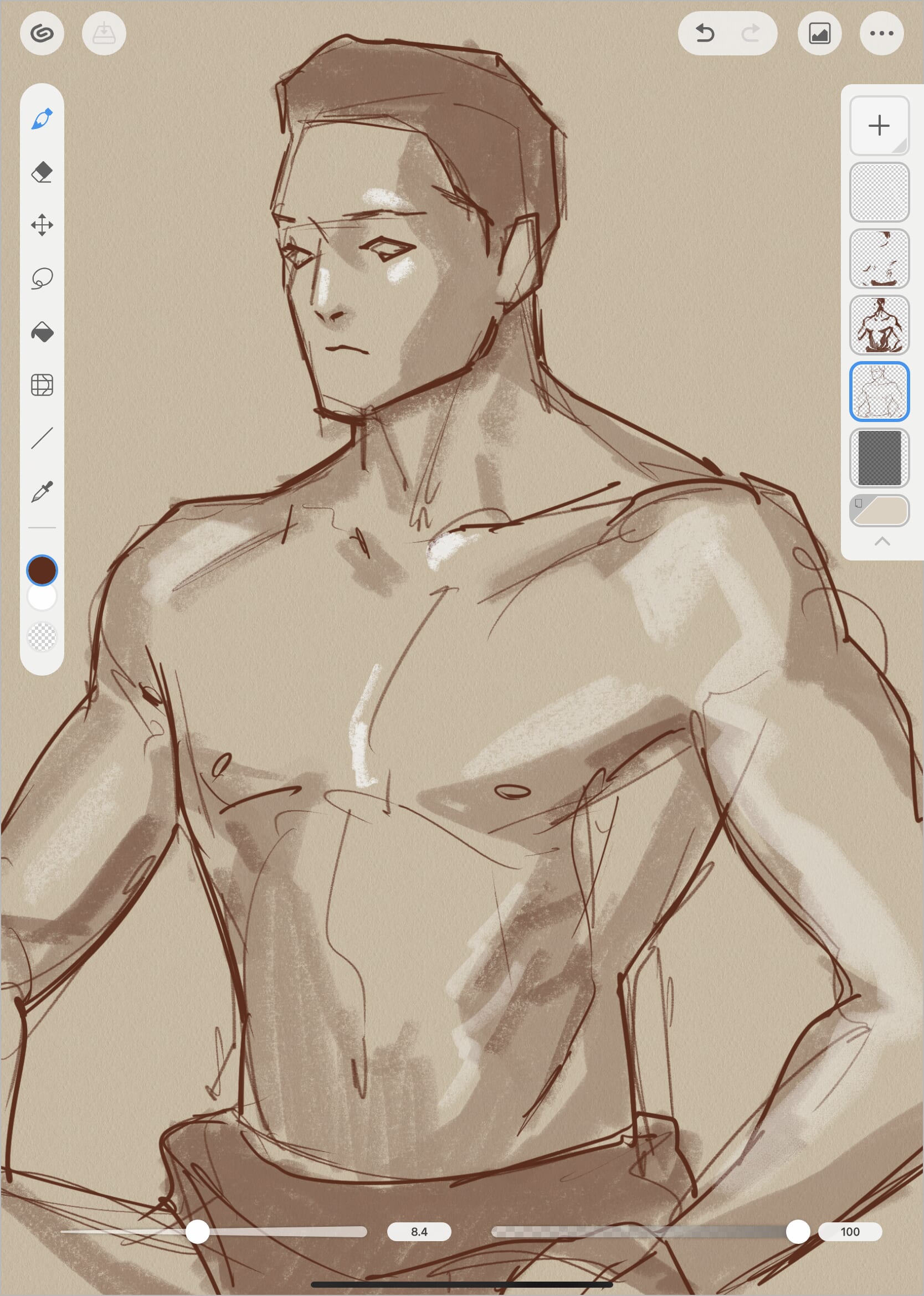
Although drawing real figures is always best, 3D model features in drawing software and 3D figure apps are quite useful for digital croquis sketches. Some examples of 3D modeling software can be found below:
Clip Studio Paint
The painting software Clip Studio Paint offers in-built 3D drawing figures with adjustable body types, height, head-to-body ratios, hands, and poses. You can also use them to sketch out the illustration composition, draw and ink all while using the 3D drawing figures as a guide. Clip Studio Paint is available for the PC and the iPad in multiple languages.
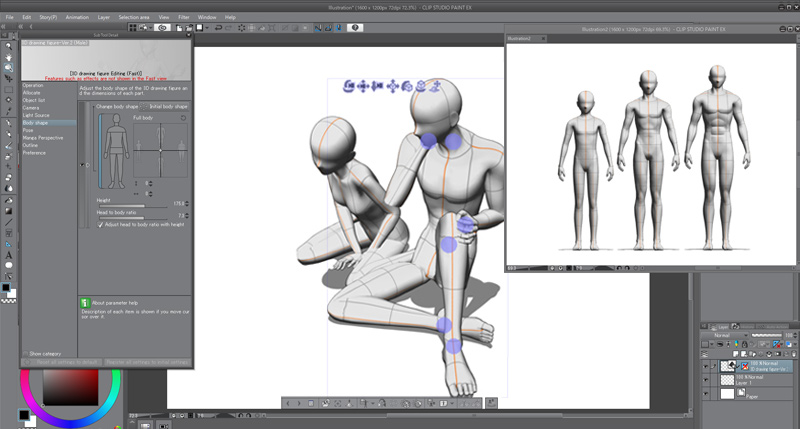
Magic Poser
Magic Poser is a 3D character posing app that allows the user to intuitively drag parts of the figure to create poses. Only the male model can be used with the free version of the app. In-app purchases are available for other figures and accessories.
Easy Poser
Easy Poser is a 3D character posing app that allows the user to observe figures from different angles. The paid PRO version of the app allows you to use and save more models.
How to create croquis sketches
1. Draw within a short time period
Before you start croquis drawing, choose a subject. Using a live model, such as a friend or family member, is preferable, but magazines and photo albums are ok too. 10 minutes is a good time limit. I recommend using your smartphone timer to time yourself. At first, you might not have enough time to finish your drawing, but that’s all right. Just getting your hand moving is the most important thing right now. As you get used to drawing croquis, you’ll be able to finish within the set time limit.
2. Focus on the whole, not the details
The key to croquis sketching is to quickly draw your lines. Do not fear mistakes and draw as many lines as you need to. As you get used to croquis sketching, adding in some line width variation can bring even more life to your work.
When croquis drawing, don’t start off by drawing the eyes, etc. Instead, draw the outlines of the whole figure. After drawing the overall shape, then move on to drawing any detailed, characteristic parts.
If you continuously draw croquis, you will gradually learn body shape and proportions such as the overall shape of the human figure, bone shapes, the width/length of arms and legs, etc. Additionally, you will learn to focus on where the center of gravity is. Natural poses have an accurate center of gravity.
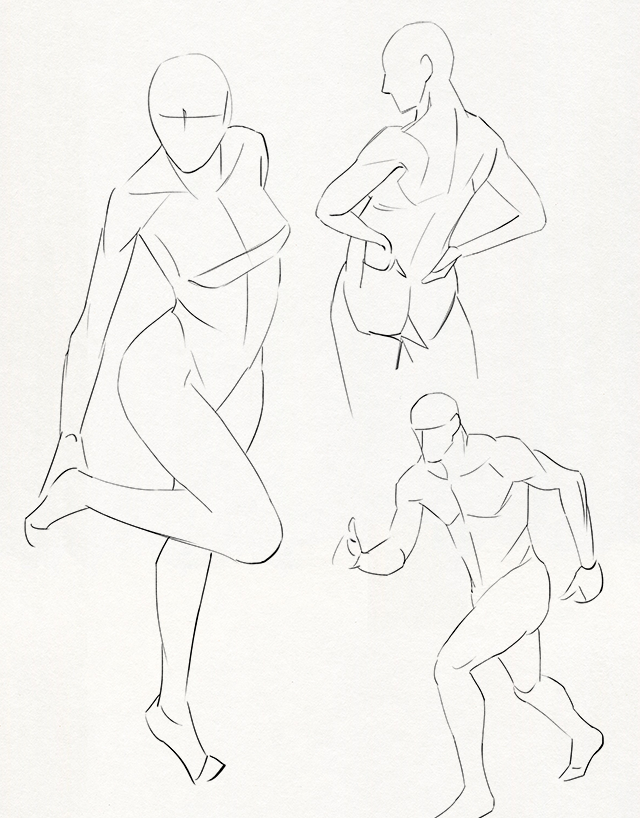
3. Capture the mood
After drawing the overall shape and body proportions, compare your croquis drawing with the subject and check that the overall balance and mood is the same. Capturing the mood is important when drawing an illustration. When children draw they tend to focus on mood rather than accuracy of physical details. For example, when depicting their parent’s faces they clearly show the parent’s mood even if the facial features aren’t accurate. Focusing on the details of faces and hands is important, but never forget to focus on the overall impression of the illustration as well.
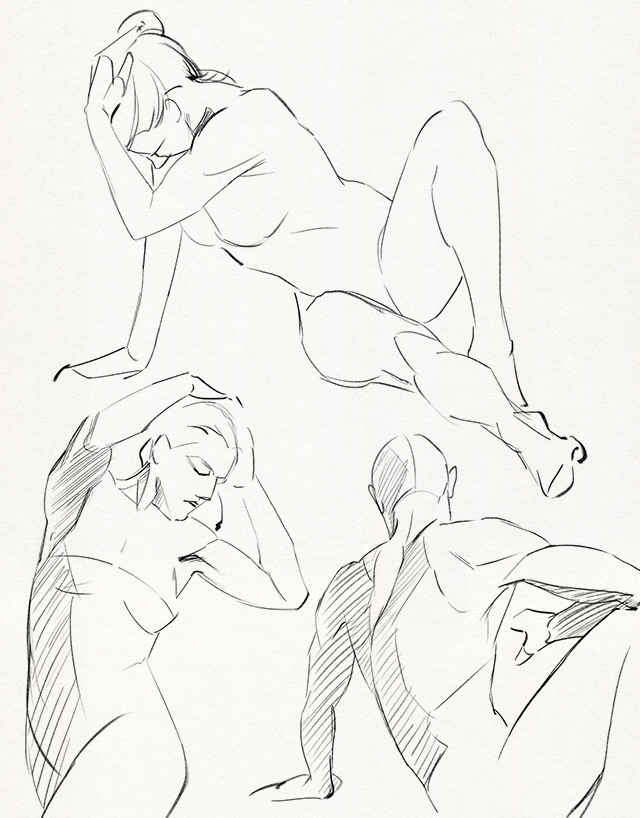
Professional artists practice with croquis sketches
The benefit of drawing without first sketching the guidelines is increased drawing speed. After enough practice, you no longer need to sketch body outlines because your brain has gradually remembered different body balances and poses over time.
Famous artists often draw characters without sketching them out first. They can do this because they have a strong idea of what they want to draw. It takes a lot of effort to reach this level, but practicing croquis sketches will definitely help you to reach it. Professional artists look at many materials and references and create croquis drawings. Many consistently carry a sketchbook and pen with them to draw the people or animals surrounding them at any time.
If you find yourself thinking things like “I want to improve my drawing skills, but I don’t know where to start or what to do!” then my strongest recommendation would be to buy a sketchbook and a pencil, start practicing croquis drawing and don’t stop. Your art and your ability to draw what you see will thank you.
(Created by: Sideranch Inc.)
(Writer: Yusuke Yamanaka)
(Illustrator: boi)
Interested in character art & design or what it takes to become a character designer?
Check out the link below!








